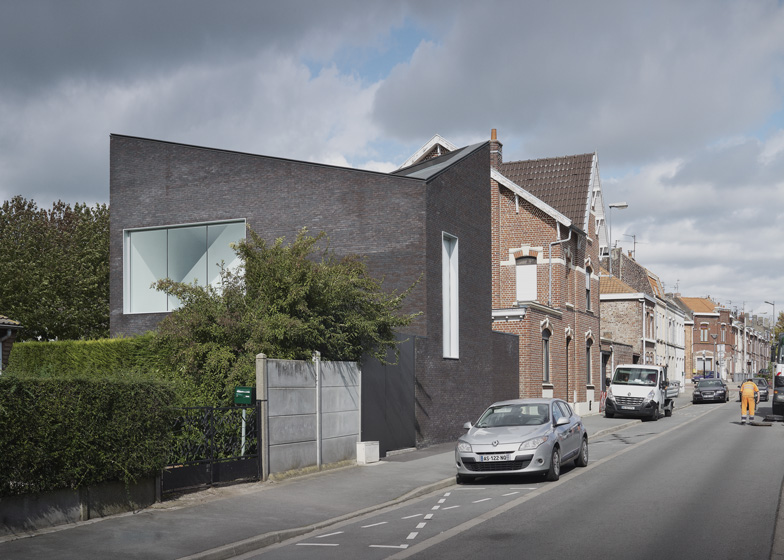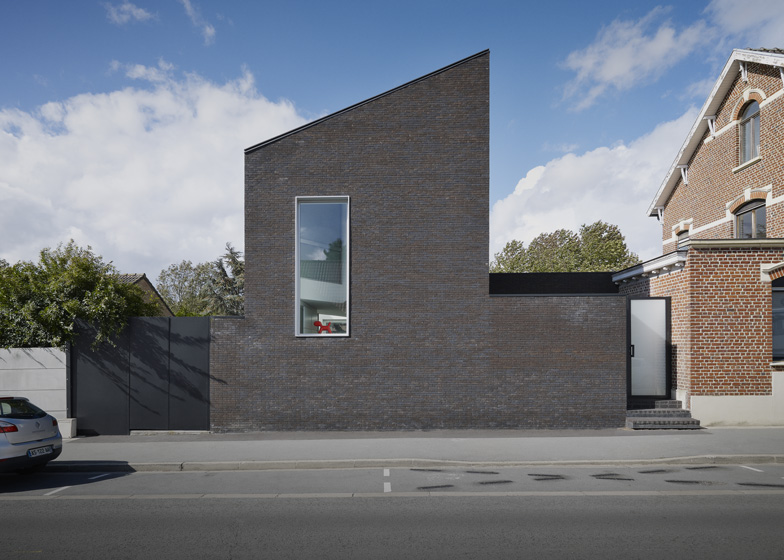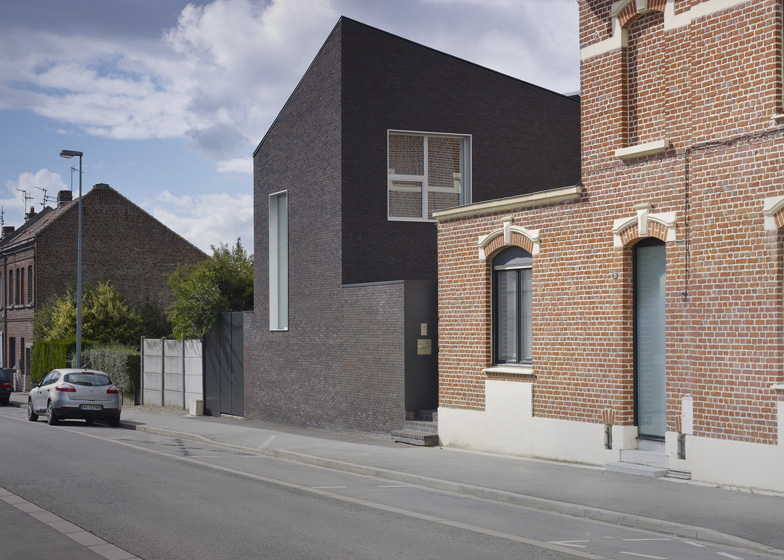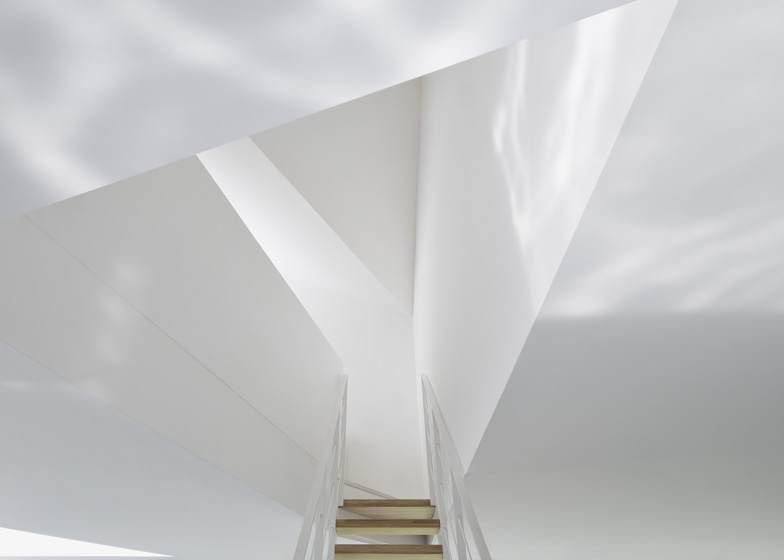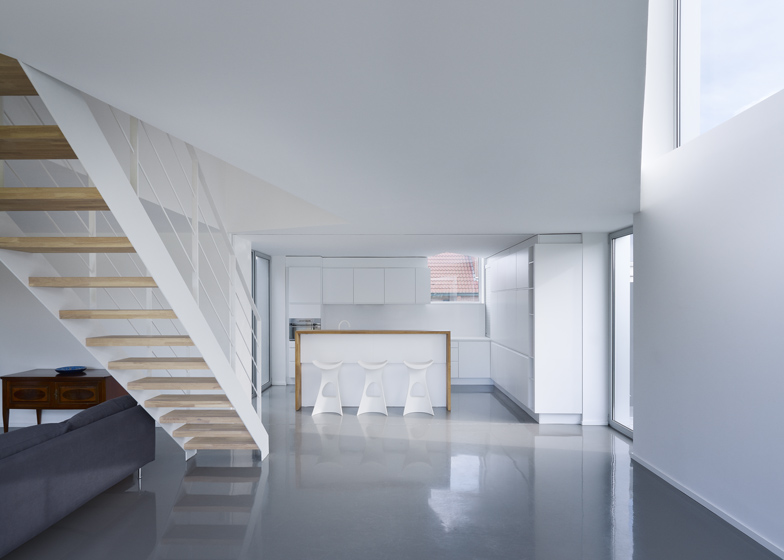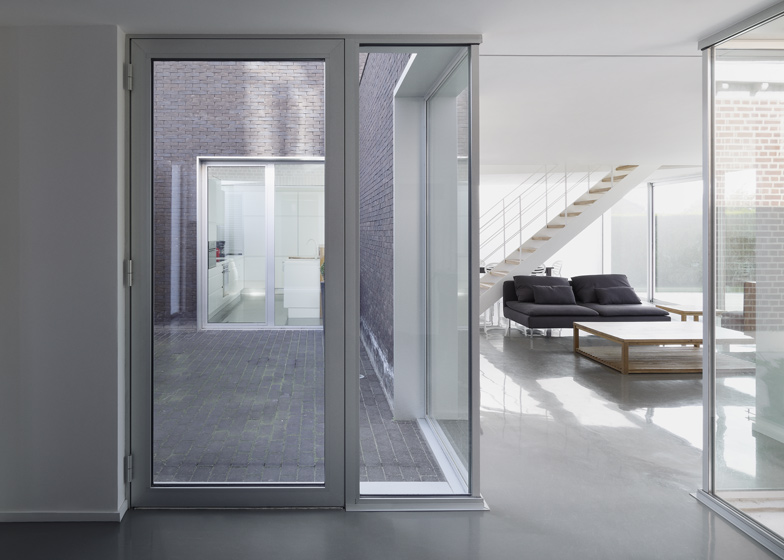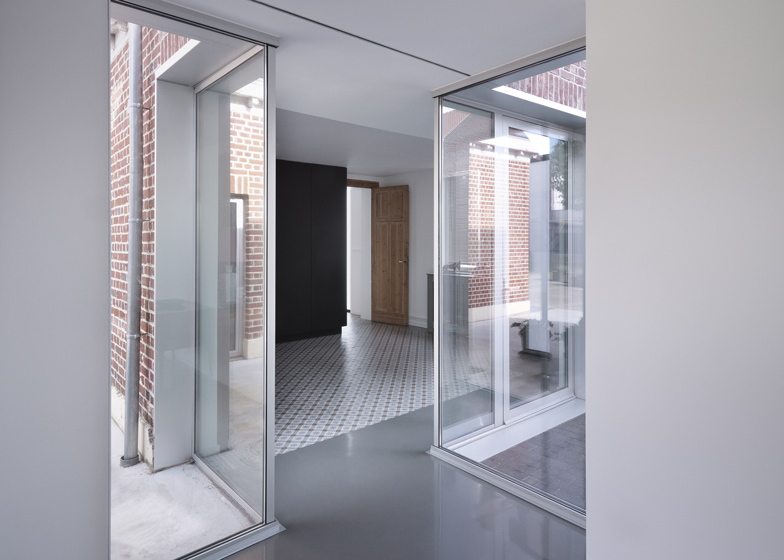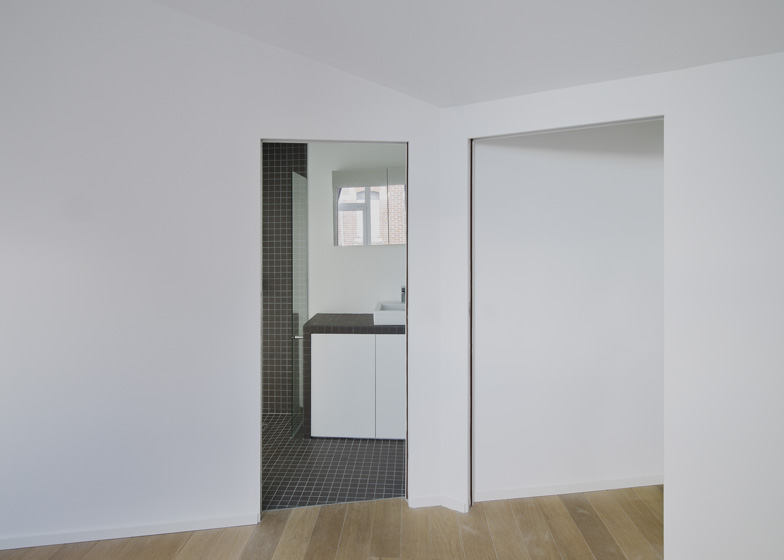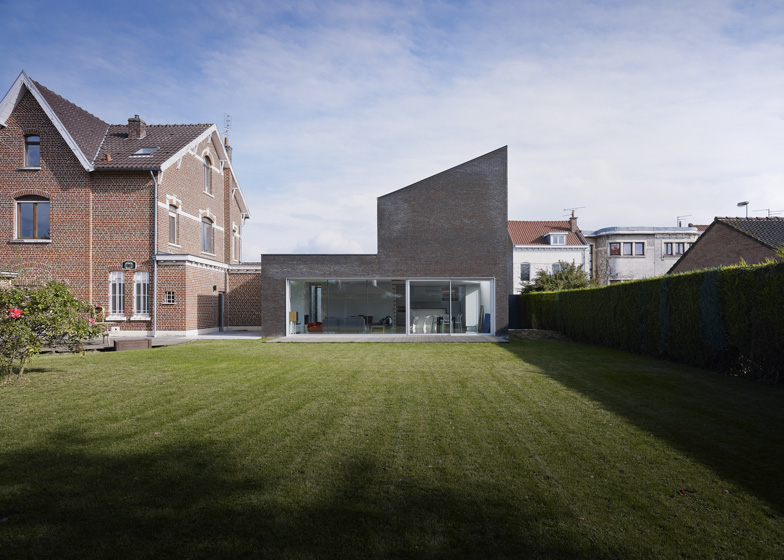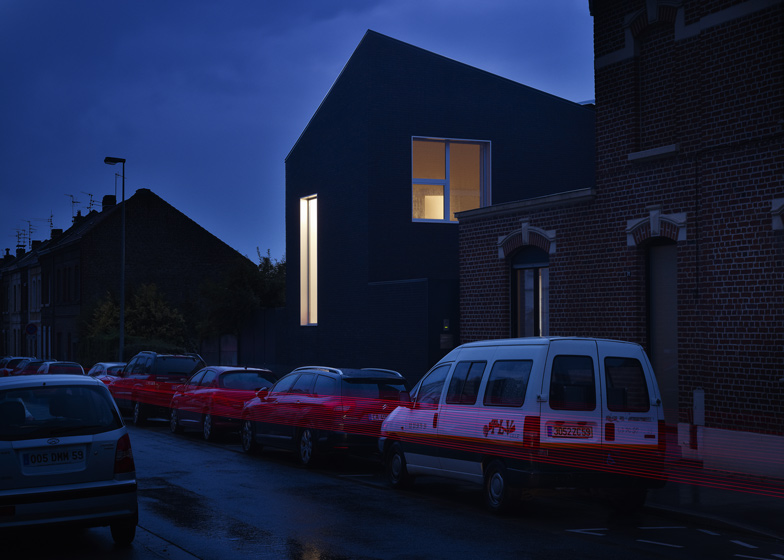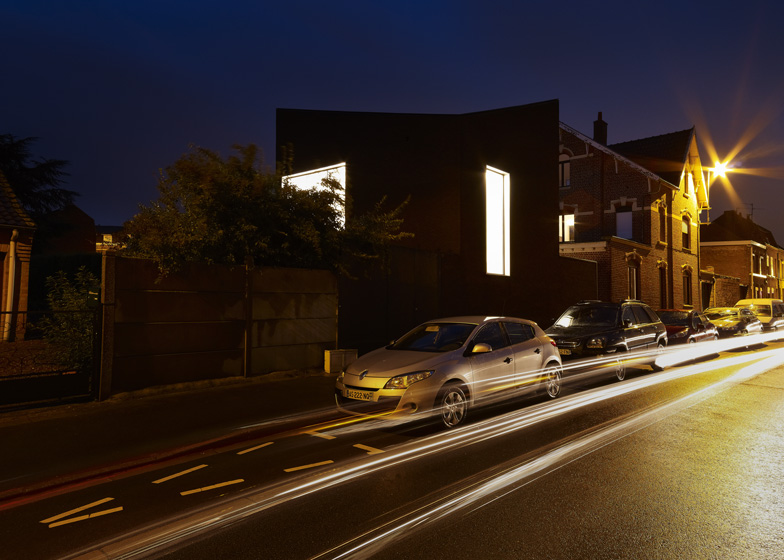French architect Emmanuelle Weiss has added a contrasting dark brick extension to a red brick house outside Lille (+ slideshow).
Weiss wanted to create a contemporary extension, but also respect the traditional materials palette. "The chosen materials are an homage to the existing house, but stay in a modern urban context," the architect explained.
Unlike the original building, which has a vernacular roof, the extension features an asymmetric roofline that slopes upwards at two opposite corners of the building to form a butterfly shape.
The two buildings barely touch, so only a single doorway connects to the existing hallway from a new open-plan living and dining room, while two patios slot into the spaces between.
A new staircase leads up to the first floor, where the irregular shape of the roof provides a faceted ceiling over the extra bedroom and dressing room.
There is no connection to the main house from these rooms, but a doorway leads out to a small terrace on the roof.
See more residential extensions on Dezeen »
See more architecture in France »
Photography is by Julien Lanoo.
Here's some more information from the architect:
Maison D - Emmanulle Weiss
House D (Maison D) is an extension of a family home in the middle of an urban area on a parcel of land twice as wide as the existing house.
The house doubles the linear qualities of the existing house façade, thus unifining a roadside landscape that was deconstructed before. The extention also doubles the importance of the private family garden.
The House D extension welcomes all the important living functions, private income patio, kitchen and living room, the architect (Emmanuelle Weiss) chose to incorporate on the first level of the extention an equipped sleeping quarter, with bathroom and a well organised dressing room.
The result of this exercise frees up the existing house, wich has mainly become the children's territory. Also now, the complementation of House D makes room to add a large office area in the existing house, addapted to the professional life of its inhabitants.
The volume, high levels, low levels: "zones" create a dialogue with the existing typical style house. All the volumes in House D translate into its roofline, bringing a richness to the space. Natural light embraces the volume, sometimes directly, sometimes reflected, it fills the complete project and living quarters.
House D is an answer to the existing devision of the main house. Its functional properties talk directly to the vertical circulations of the existing house, it opens up living space.
To link the old and new together, the architect chose to use a minimal contact between both architectures. The new differentiates itself on the outside by two little patios, only linking itself to the old on the interior where the new encroaches into the hallway.
The chosen materials are an homage to the existing house, but stay in a modern urban context. Dark bricks (reflecting back on a modern way to the dark old red bricks typical for this area) and aluminium detailing show subtle hints to thier surroundings.
Above: ground floor plan
Above: first floor plan (extension only)

